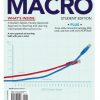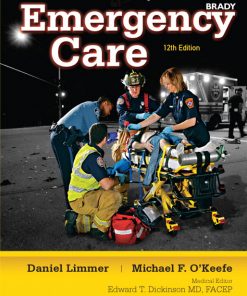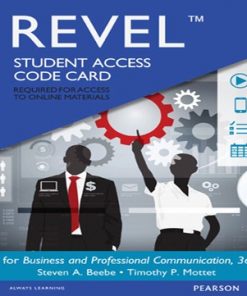Anthropology The Basics 1st Edition Scupin & DeCorse Test Bank
$55.00
Anthropology The Basics 1st Edition Scupin & DeCorse Test Bank
You will receive this product within 24 hours after placing the order
978-0134147277
CHAPTER 3
THE RECORD OF THE PAST
LEARNING OBJECTIVES
3.1 Define paleoanthropology and discuss what we can learn about the past from fossil evidence.
3.2 Discuss what the archaeological record can tell us about past societies.
3.3 Discuss the techniques used to locate archaeological sites and fossil localities.
3.4 Discuss the basic techniques of archaeological excavation.
3.5 Compare and contrast how archaeologists and paleoanthropologists date their discoveries.
3.6 Discuss the challenges of interpreting the past and how these are overcome.
CHAPTER OUTLINE
ANSWERING QUESTIONS
Critical Perspectives: Engendering Archaeology: The Role of Women in Aztec Mexico
PALEOANTHROPOLOGICAL STUDY
Fossils and Fossil Localities
ARCHAEOLOGICAL RESEARCH
Critical Perspectives: Historical Archaeology
The Archaeological Record
Anthropologists at Work: George Fletcher Bass: Underwater Archaeologist
LOCATING SITES AND FOSSIL LOCALITIES
Critical Perspectives: Underwater Archaeology
Subsurface Archaeological Testing and Survey
Remote Sensing
Anthropologists at Work: Scott Madry: Google Earth and Armchair Archaeology
ARCHAEOLOGICAL EXCAVATION
DATING METHODS
Relative Dating
Faunal Succession
Palynology
Relative Dating Methods of Bones
Obsidian Hydration
Seriation
Numerical or Absolute Dating
Radiocarbon Dating
Potassium-Argon and Fission-Track Dating
Thermoluminescence Dating
Dendochronology
Critical Perspectives: The Piltdown Fraud
INTERPRETATIONS ABOUT THE PAST
SUMMARY AND REVIEW OF LEARNING OBJECTIVES
LECTURE AND DISCUSSION TOPICS
Each of these topics is intended to generate ideas for either a lecture/recitation format or discussion in the classroom. For most topics, students should be able to respond and participate in discussions based solely on reading the text. For others, you may need to provide further reading or other forms of information so that students can develop some personal perspective and become equipped to make independent decisions about the topics.
1. Explore the distinctions between the roles and activities of paleoanthropologists and archaeologists, emphasizing the different methods, materials, and results in each area of study.
2. Lecture on the importance of the fossil record, how fossils form, the information that they yield, and the difficulties inherent in the interpretation of the fossil record. Explain the concepts of fossil localities and the processes of fossil collection.
3. Explain the basic concepts of archaeology. Discuss the relationships among sites, artifacts, features, context, and preservation. Include in your discussion an explanation of previous attempts at studying the past, such as antiquaries’ collections, with contemporary research designs, or archaeological methods.
4. Lecture on the comparative contributions of different methodological approaches to studying the past. Pay particular attention to historical archaeology and underwater archaeology.
5. Detail the various processes of locating archaeological sites. Include in your discussion an explanation of survey methods and systematic and unsystematic approaches to archaeological surveys. Discuss the benefits and limitations of the methods for subsurface testing, including the proton magnetometer and electrical resistivity. Explain the process of remote sensing using aerial photography and satellites. Look at the ways archaeologist Scott Madry has used Google Earth.
6. Lecture on the process of archaeological excavation, distinguishing the types of information that excavation yields, and the expectations for the use of such information (for instance, the results of an excavation of a midden or tell).
7. Describe the applications of various archaeological dating methods. Use examples to illustrate the distinction between relative dating and absolute dating using relevant terms, such as stratigraphic dating, Steno’s law of supraposition, faunal succession, faunal correlation, palynology, the FUN trio, obsidian hydration, seriation, radiocarbon dating, potassium-argon dating, fission-track dating, thermoluminescence dating, and dendrochronology.
8. Lecture on the mechanics of radiocarbon dating and its value to anthropology and archaeology. You could also discuss other forms of radioactive dating, such as the potassium-argon method. Consider showing the film The Tree That Put the Clock Back, which describes the relationship between radiocarbon dating, dendrochronology, and the collapse of diffusionism. It cites Colin Renfrew as a primary source.
9. Explore the details of the Piltdown fraud. Show how it was perpetrated and its effects on the scientific community at the time. Explain how fluorine analysis was used to reexamine the Piltdown fossils.
10. Explain the implications of biased versus balanced interpretations of the archaeological record. Use historical examples with which students may be familiar.
CLASSROOM ACTIVITIES
1. One very vivid way to illustrate the processes of archaeological methods is to have students participate in a mock dig. Construct a “site” with various levels and artifacts, which may be used to simulate the process of archaeological discovery of artifacts.
2. Invite professionals from other disciplines to guest lecture: a geologist to discuss stratigraphy, a biologist on faunal succession/faunal correlation and palynology, a chemist on the FUN trio, and a physicist on radioactive decay dating (e.g., carbon-14 dating, potassium-argon dating, fission-track dating, and thermoluminescence dating).
3. Students can debate the methods and merits of artifact and site preservation, based on outside reading of news articles and current research. Also have students explore relevant Web sites.
4. As an application activity, have students assume the role of a historical archaeologist or an underwater archaeologist. Ask them to explain the relative merits of each of their methods to others in the group in order to compare the difficulties and reliability of each of their approaches to studying the past. Create scenarios or problems that require their unique skills, or that require a combination of these methods, to find a solution. Encourage students to find out what archaeological experiences may be available in their community.
5. Simulate or use actual site maps to give students experience in the techniques involved in locating archaeological sites. By visiting Google Earth and viewing slides, aerial photographs, or diagrams of artifact scatters, students could define where a site might be and indicate what methods might be used to test the site.
6. One way to encourage reflection on the implications of biased versus balanced interpretations of the archaeological record is to have students investigate some of the frauds that have been perpetrated throughout history using archaeological “facts.” Students might read about social, political, and economic conditions that affected the interpretation of archaeological investigations. Have them explain what the current perspective is on the interpretation of such finds.
RESEARCH AND WRITING TOPICS
1. Research the roles of the paleoanthropologist and the archaeologist; report on the similarities and differences of these two fields using actual practitioners as examples.
2. Based on a mock excavation, write a report that includes the need for site preservation, modeled after actual site preservation documents.
3. Research eighteenth- and nineteenth-century accounts and records of antiquities collectors. Compare the collections and the intent of the collectors with those of researchers today.
4. Conduct research on a project involving historical archaeology or underwater archaeology. Describe the project, the methods used, and the results.
5. Write a descriptive paper on the processes of locating archaeological sites, including an evaluation of current practices in one or more of the following: survey methods, systematic and unsystematic approaches, subsurface testing, proton magnetometer, electrical resistivity, remote sensing, aerial photography, and satellite imaging.
6. Write an evaluative paper on one or more of the applications of various archaeological dating methods, such as stratigraphic dating, faunal succession, faunal correlation, palynology, the FUN trio, seriation, radiocarbon dating, potassium-argon dating, fission-track dating, thermoluminescence dating, and dendrochronology. Compare their benefits and drawbacks and their usefulness to archaeology and the study of human development.
7. Investigate specific examples of research findings that have been found to be biased and what the current findings indicate. How did researchers prove that the original findings were biased? What circumstances encouraged the bias in the first place?
8. Design a mock Web site that operates like a time capsule. What sort of information would you include in it so that people of the future could understand our generation, its problems, and its successes?
9. Evaluate some of the popular fictional literature that makes use of archaeology, such as Tony Hillerman’s Westerns (Dance Hall of the Dead). Select one author and demonstrate how he or she uses concepts of archaeology correctly or incorrectly.











Reviews
There are no reviews yet.